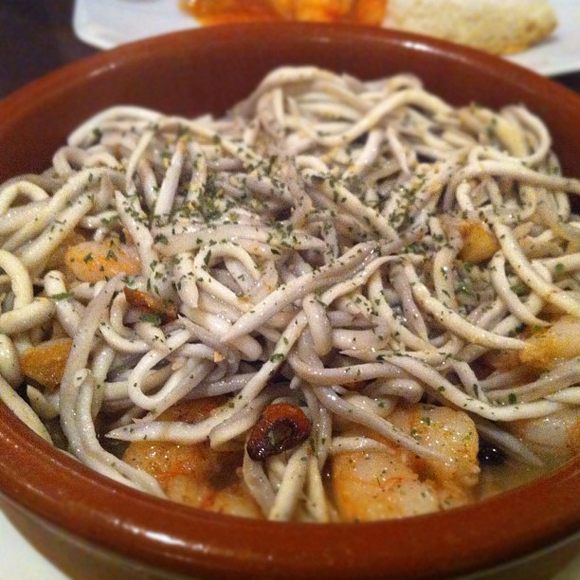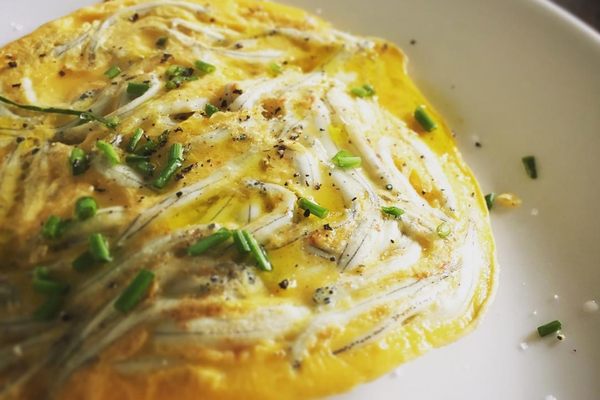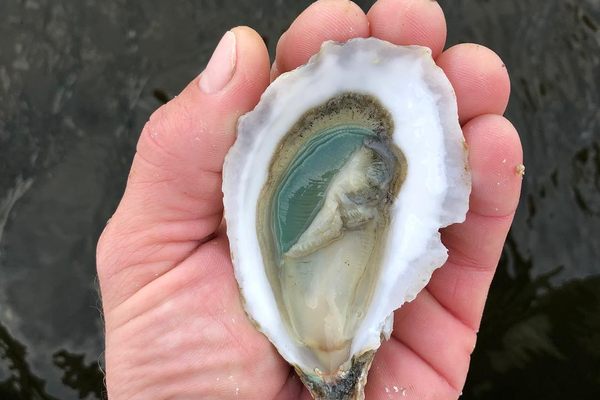What appears to be a steaming bowl of thick, white noodles is actually a seafood delicacy. Look a little closer at your bowl of angulas, a Basque dish relished for generations, and you’ll probably find a dozen tiny faces staring back at you.
Angulas, also known by their Basque name txitxardin (or “elvers” in English), are juvenile European eels that have been caught on their way back to ancestral rivers and streams. As adults, the eels swim thousands of miles from Europe’s coasts to the Sargasso Sea (in the northwestern Atlantic Ocean), where they spawn, lay eggs, and die. After they’re born, the baby eels spend two to three years journeying back to Northern Spain via the Gulf Stream.
Overfishing, seasonality, and high demand from Spain, wider Europe, and Asia has resulted in a high price tag for angulas. In 2015, the baby eels went for $200 per pound, making this “caviar of Northern Spain” a highly prized delicacy. The glassy eels are dredged up from river mouths overnight (they rest on the bottom during the day) and cooked live or shortly after death to preserve their delicate, meaty texture.
Angulas are most commonly served a la Bilbaína, meaning in earthenware pots, along with browned garlic and red pepper flakes. The eels themselves are so finely flavored that special wooden cutlery must be used so as to not let any metallic tint disrupt the experience. This meal is usually reserved for Christmastime, as the eels arrive in European waters around winter.
If you can’t afford angulas, or you don’t want to wait until Christmas for your eels, you can also find a product called gulas across Spain. These imitation angulas are made from processed fish, similar to mock crab that you may find in salads or California rolls. Restaurants often serve gulas with pasta, with other seafood, or on top of pinchos (skewered bread with various toppings, sometimes viewed as Northern Spain’s equivalent of tapas).
Stories abound of unwary tourists being tricked into purchasing the mock version at the price of real angulas, so it always pays to inspect your food before settling the check. The dead giveaway: Real angulas have a tiny face at one end, with pinprick eyes and a thin mouth.
Written By
 JamesRUDD
JamesRUDD
Sources
- www.nytimes.com/1994/05/27/style/27iht-eels.html
- www.thespruce.com/what-are-angulas-3083602
- northernexposurespain.wordpress.com/2014/02/09/angulas-the-caviar-of-northern-spain-highlight-of-a-foodie-meal/
- books.google.com/books?id=1f-lAwAAQBAJ&printsec=frontcover&dq=1,000+foods+to&hl=en&sa=X&ved=0ahUKEwjQw9unp4fZAhWxrFkKHaWdCH0Q6AEIJzAA#v=onepage&q=angulas&f=false















